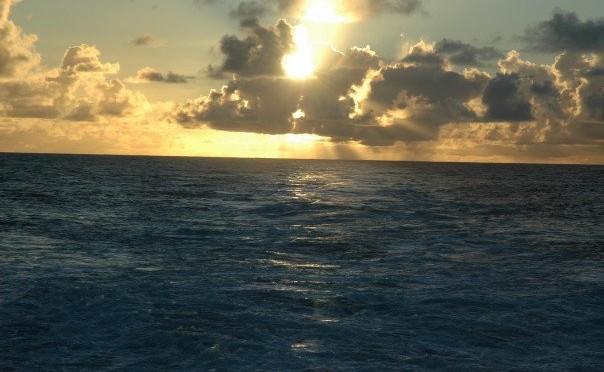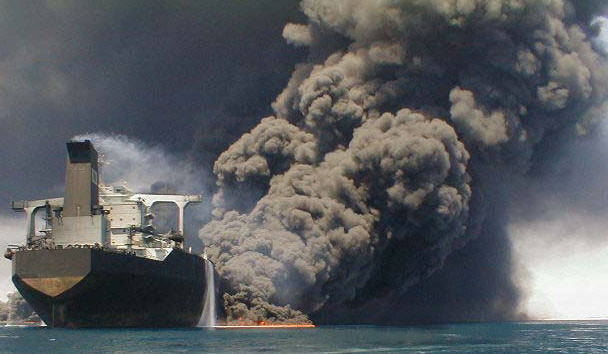Introduction
Every initiative has positive and negative sides. This applies equally to the International Ship and Port Facility Security (ISPS) Code. Whilst it may be true that the ISPS Code introduced a new burden by way of the volume of paperwork it generates, its benefits outweigh the burdens. The reasons for this are as follows:
Violence against vessels will remain so long as maritime transport exists. Apart from piracy and armed robbery, we now have the threat of maritime terrorism, which poses real danger to the industry. Some of the world’s major sea lanes pass through narrow waterways, such as the Straits of Malacca and Gibraltar as well as the Panama Canal and Suez Canal, any of which could be an ideal target for terrorist attack on ships.
We cannot think of all the potential targets for maritime terrorists. A good example is the hijacking of the Italian flagged cruise ship, Achille Lauro, by four terrorists who were members of the Palestinian Liberation Front (PLF) on 7th October 1985 in Egyptian territorial waters near the seaport port of Alexandria, which had about 800 passengers on board, excluding the crew. The PLF terrorists had demanded the release of fifty Palestinians held in Israeli prisons as the reason for their action, killed a disabled passenger in a wheelchair and threw his body overboard in the course of the stalemate. If such an incident were to take place today, it may involve more lives because cruise ships these days may be better described as floating ‘townships’ with capacity to carry thousands of passengers. For instance, the Italian flagged cruise ship, Costa Concordia, which grounded on January 13th 2012 was 114,137 gross tons with 13 decks and was known to have had passengers and crew in excess of 3,200 and 1000 respectively on board.
Genesis of the ISPS Code
A chronology of the events which led to adoption of the ISPS Code may shed light on the theme of this article. The Achille Lauro incident mentioned above led to an outcry by the international community. The International Maritime Organisation (IMO) being the United Nations specialised Agency with responsibility for safety and security of shipping acted accordingly by adopting Resolution A.584(14) on 20th November 1985 on Measures to Prevent Unlawful Acts Which Threaten the Safety of Ships and the Security of their Passengers and Crews. Some countries, namely Austria, Egypt and Italy, as well as the International Transport Workers Federation (ITF), urged the IMO in 1986, to prepare a convention to tackle unlawful acts against the safety of maritime navigation on the basis that there was a gap that needed to be filled by having a new convention to deal with maritime terrorism because the international law for unlawful acts against ships was far behind, compared to the civil aviation sector which had adopted the Convention for the Suppression of Unlawful Acts against the Safety of Civil Aviation in 1973, otherwise commonly known as the Montreal Convention. Thus a conference was held in the early part of March 1988 in Rome, and with support from more States, on 10th March 1988 the conference adopted the Convention for the Suppression of Unlawful Acts against the Safety of Maritime Navigation (SUA Convention) 1988. The SUA Convention 1988 was to ensure that appropriate action is taken against persons committing unlawful acts against ships and requires governments to extradite or prosecute offenders.
At the time of the 11th September 2001 (9/11) terrorist attacks in the United States, the SUA Convention which came into force on 1st March 1992 had been ratified by only 67 countries, worldwide. However, after the 9/11 attacks, the number of ratifications for the SUA Convention skyrocketed significantly to 146 States by spring of 2008, which reflects how serious the international community now regard the issue of terrorism and its potential threat to the maritime sector. Unfortunately the SUA Convention 1988 was seen as a toothless bulldog as it had no law enforcement provisions to deal with impending offences and failed to address the growing trend of global terrorism with proliferation of weapons of mass destruction. Thus after the 9/11 attacks, in November 2001 the IMO adopted Resolution A.924(22) to review existing measures to prevent and suppress terrorist acts against ships at sea and in ports, to improve security aboard and ashore so as to reduce risk to passengers and crew, as well as port workers on board ships and ashore, and to ships and their cargoes.
Consequently, a diplomatic conference took place at the IMO Secretariat in London from 9th to 13th December 2002 for measures to be taken to strengthen maritime security and to prevent and suppress acts of terrorism against shipping. That conference adopted a number of amendments to the International Convention for the Safety of Life at Sea (SOLAS) 1974, the most important of which introduced the ISPS Code as chapter XI-2 of SOLAS. The ISPS Code came into force on 1st July 2004. As we know, Part ‘A’ of the ISPS Code contains detailed security-related requirements for Governments, Port Authorities and Shipping Companies which are mandatory, and Part ‘B’ contain guidelines on how the mandatory requirements are to be met.
At about the same time while the ISPS Code was in the making, there was preparatory work to toughen the SUA Convention. With backing of the United Nations General Assembly through Resolution 59/24 of 17th November 2004, the SUA Convention 1988 and the accompanying Protocol on Fixed Platforms were amended on 14th October 2005 with the adoption of The 2005 Protocol to the SUA Convention and The 2005 SUA Fixed Platforms Protocol. Both Protocols created a new criminal offence for any person who unlawfully and intentionally attempts to intimidate a population or compel a Government or an international organisation. The 2005 SUA Protocols now cover modern day terrorist threats, including use of Biological, Chemical and Nuclear (BCN) weapons and materials, and to allow officials to board foreign flagged ships on the high seas to search for potential terrorists and their weapons, or to assist a vessel suspected to be under attack in similar circumstances.
A preventive instrument
The main aim of the ISPS Code is to serve as a preventive, rather than curative instrument. No instrument will eradicate terrorism and other unlawful acts completely, just as the 1973 Montreal Convention in civil aviation did not prevent the 9/11 attacks. The paperwork generated by the ISPS Code may be a burden, but it serves as a constant reminder of the potential threat we all face, which may help to minimise potential atrocities against vessels, including crew, passengers, cargoes and port facilities.
I wish we knew, but we may never know how many potential terrorist attacks or other unlawful acts which have been prevented by the ISPS Code. The intangible benefit may be seen from the fact that at least we have not had any terrorist attacks on the scale of the 9/11 attacks in the maritime sector (which is not impossible). Surely, no seafarer would like to witness something like the 9/11 attacks.
Conclusion
As we mark the 10th anniversary of the ISPS Code this month (July 2014), we need to reflect on its intangible benefits. The additional paperwork created by the ISPS Code is a constant reminder of the need for everyone in the maritime industry to be vigilant, which in turn keeps us on the alert that the maritime sector may be a potential target for a terrorist attack or other unlawful acts, any day, anytime, anywhere. No international instrument, whether labelled as a Convention, Treaty, Code, Protocol, Pact, Accord, Memorandum of Understanding (MoU) or by any other designation, will stop a determined suicide bomber or criminal from carrying out an atrocious act, but vigilance may help to minimise, if not prevent it.
Herbert is the CEO of Global Maritime Bureau, an international maritime consultancy firm in the UK. He is a dual qualified lawyer in England & Wales and Nigeria and a member of the Chartered Institute of Arbitrators. He is an expert in international maritime and admiralty law, international dispute resolution services and multi-jurisdictional disputes. He is a Supporting member of London Maritime Arbitrators Association (LMAA), member of the International Maritime Statistics Forum (IMSF) and a member of International Maritime Organisation (IMO) Roster of Expert Consultants.




